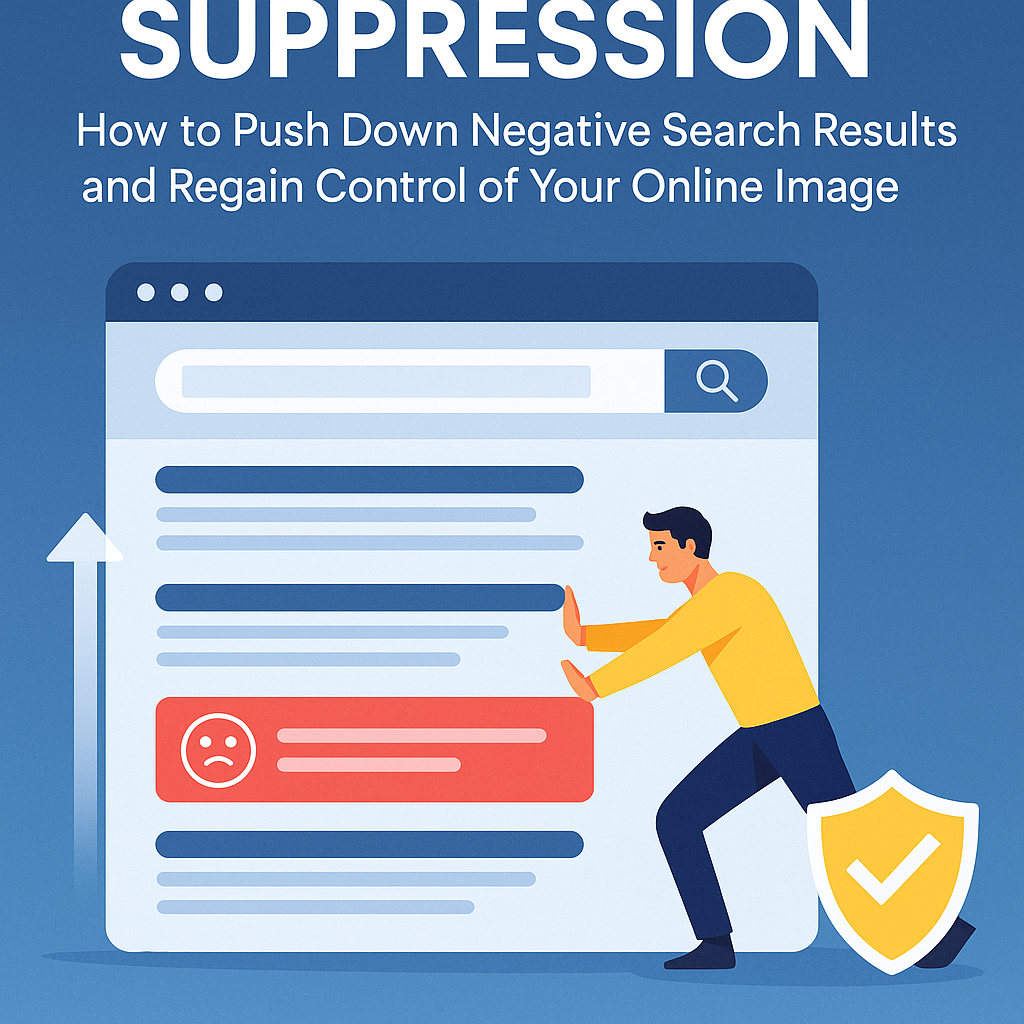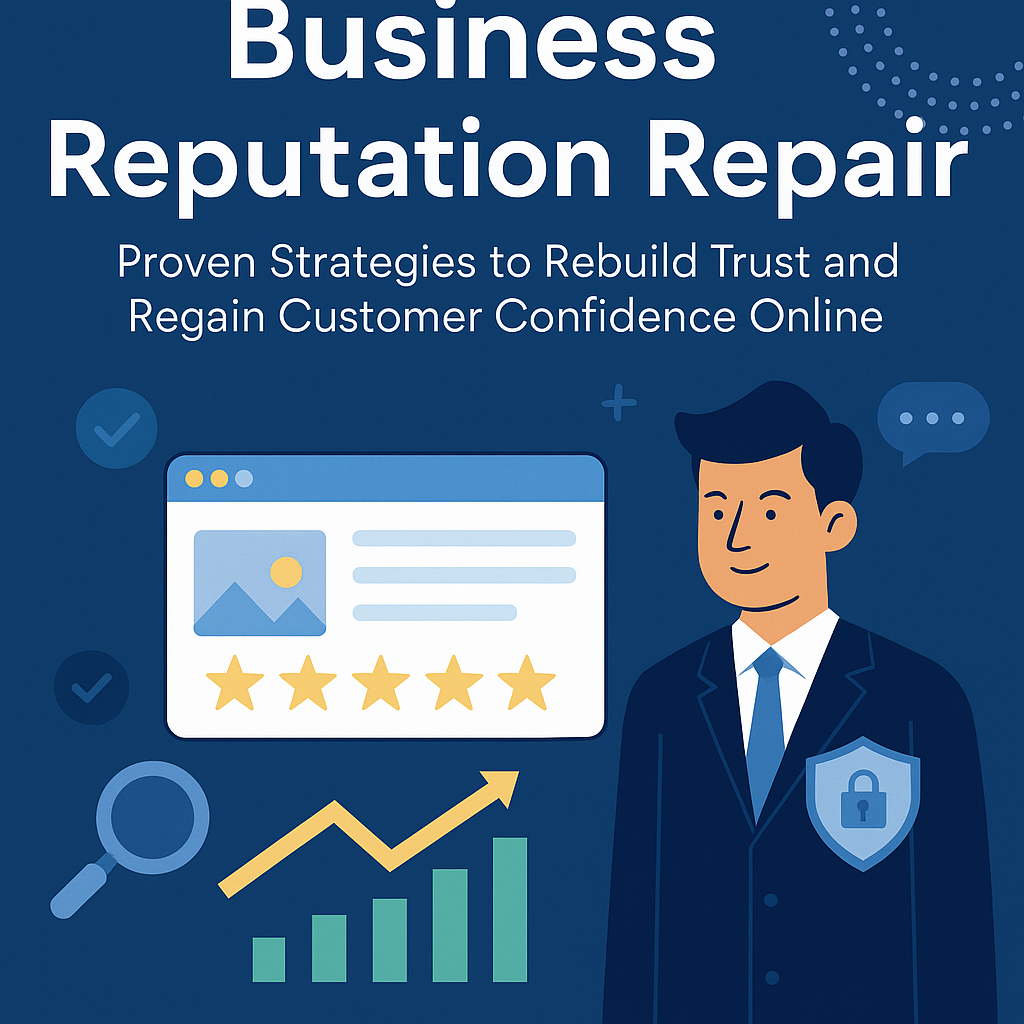The Rising Importance of Online Image Control
Your online presence can make or break opportunities in personal and professional life. In an era where search results shape first impressions, a single unfavorable link can overshadow years of credibility. Reputation suppression focuses on strategic content creation, SEO, and removal requests to push down negative links and replace them with accurate, favorable content.
What Is Reputation Suppression?
Reputation suppression is the practice of using SEO, content publishing, and platform engagement to push undesirable links off the first page of search engines. Unlike content removal, which seeks to delete negative posts, suppression buries them beneath high-authority content so they are harder to find.
Key Objectives of Reputation Suppression:
- Suppress slanderous articles or defamatory posts
- Outrank outdated, irrelevant search results
- Diminish visibility of lawsuits, mugshots, or review bombs
- Reclaim brand or personal identity on Google
- Maintain professional credibility in search environments
- Control narrative during litigation or crisis PR events
Suppression vs. Removal: Understanding the Difference
| Feature | Suppression | Removal |
|---|---|---|
| Goal | Bury harmful links | Delete links completely |
| Success Rate | High with consistent effort | Low (only works in specific scenarios) |
| Best For | Public figures, businesses, executives | Victims of defamation, revenge sites |
| Time Frame | 2–6 months typical | Varies (weeks to years) |
| Cost Range | Moderate to high depending on scope | High (especially legal takedowns) |
| Longevity | Requires ongoing effort | Permanent if successful |
Use suppression when removal isn’t legally viable or when negative links fall under protected speech.
Common Triggers for Reputation Suppression
- Defamatory News Articles
- Negative Business Reviews
- Court Records and Mugshots
- Blog Posts or Reddit Threads
- SEO-poisoned Search Suggestions
- Competitor Sabotage or Reputation Bombing
- Old Legal Documents or Divorce Records
- Viral Tweets or Posts from Years Past
Key Components of an Effective Suppression Campaign
1. Content Creation Strategy
You’ll need positive content that ranks well on Google to push negative results down.
- Press releases
- Authoritative blog posts
- Guest articles
- Personal or business websites
- High-ranking profiles (LinkedIn, Crunchbase, Medium)
- Online bios and speaker profiles
- Thought leadership content and whitepapers
Tips:
- Use your full name or brand consistently
- Optimize headlines, H1/H2s, and metadata with target phrases
- Incorporate location-specific keywords for local search visibility
2. Search Engine Optimization (SEO)
SEO is the backbone of reputation suppression.
- Target long-tail and branded keywords
- Link to positive content across properties
- Use internal and external backlinking
- Build schema for featured snippet inclusion
- Implement technical SEO like mobile-responsiveness and page speed
3. Social Media Leverage
High-authority platforms rank easily. Build:
- Twitter threads with strategic mentions
- Instagram highlights with your name
- Facebook Page updates using personal branding keywords
- TikTok, YouTube, and Threads videos that include name in captions and meta
- LinkedIn newsletters and articles for B2B visibility
4. Google Autocomplete Cleansing
Suppressing damaging autocomplete predictions can redirect public perception.
- Use services that flood Google with positive queries
- Search for your name daily and click positive results
- Leverage fake search simulations (in moderation)
- Employ browser automation and user agents for volume simulation
5. Strategic Link Building
Strong backlinks help positive content outrank harmful links.
- Use HARO to get quoted in news sites
- Submit articles to directories like Business.com or PRWeb
- Build links via interviews, podcast appearances, and local citations
- Create contextual anchor links from trusted blogs
- Exchange guest posts within niche communities
6. Content Publishing Cadence
One post isn’t enough. Publish consistently:
- 1–2 new posts per week
- Vary between personal and business topics
- Use different content types (video, articles, graphics)
- Repurpose long-form blogs into short social content
- Publish thought-leader series and community contributions
Advanced Suppression Techniques
- Tiered Linking: Build backlinks to the pages already linking to your content
- Branded Wikipedia or Wikitia Pages: If eligible, these rank quickly
- Image Optimization: Use image SEO to take up more SERP space with positive visuals
- Directory Stacking: Create consistent listings across hundreds of citation sources
- Crowdsourced Review Generation: Push negative reviews down by earning authentic new feedback
- Sentiment Analysis: Use tools like MonkeyLearn to guide content tone for higher trust scores
Common Pitfalls to Avoid in Suppression Campaigns
- Duplicated content across domains
- Lack of backlinks or authority
- Neglecting mobile-first indexing
- Focusing only on Google, not Bing or Yahoo
- Ignoring reputation monitoring tools
- Keyword stuffing without relevance
- Buying fake backlinks or reviews (risk of deindexing)
Tools to Support Reputation Suppression
- Google Alerts – Monitor new mentions
- Ahrefs & SEMrush – Backlink building and keyword research
- Mention.com – Social and blog monitoring
- Optimize Up – Complete suppression campaign management
- Archive.org – Snapshot backups of good content
- BrandYourself – DIY tools for visibility cleanup
- Ubersuggest – Track keyword movement
- BuzzSumo – Track content popularity trends
The Power of High-Authority Platforms
Publishing on trusted domains can quickly displace harmful links. Focus on:
- Medium.com
- LinkedIn Articles
- YouTube Channels
- Reddit AMA Threads
- Substack Newsletters
- Google Business Profiles
- Quora Answers with SEO-friendly headlines
- Pinterest Boards and Tumblr for multimedia pushes
Optimize Up’s Role in Reputation Suppression
Optimize Up offers tailored services to:
- Audit negative search results
- Identify suppression-friendly keyword clusters
- Produce authoritative content
- Execute SEO for long-term ranking gains
- Clean up Google autocomplete predictions
- Replace negative listings with accurate brand messaging
- Assist with legal removals when necessary
- Monitor progress and adjust strategies dynamically
Don’t leave your online image to chance. Book a free consultation today with our expert team.
Frequently Asked Questions (FAQs)
Typically 3–6 months, but high-competition terms may take longer.
No. It only pushes them lower in search rankings. For removal, legal action or DMCA requests are necessary.
In many cases, yes—especially when removal is legally or technically impossible.
It’s more difficult, but possible with sustained SEO and authority building.
Yes, but results may be limited. Working with an expert ensures faster, longer-lasting outcomes.
It requires maintenance. If positive content loses ranking strength, negative content may resurface.
Long-form content on high-authority sites, videos, podcasts, interviews, and review articles.
Yes. Optimize Up specializes in individual, brand, and corporate reputation strategies.





